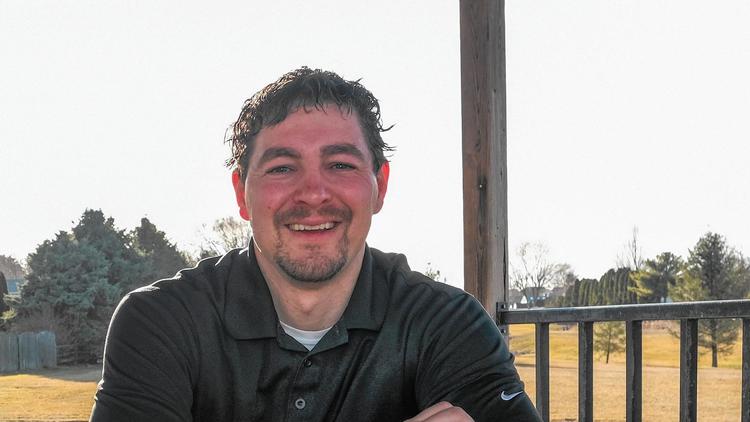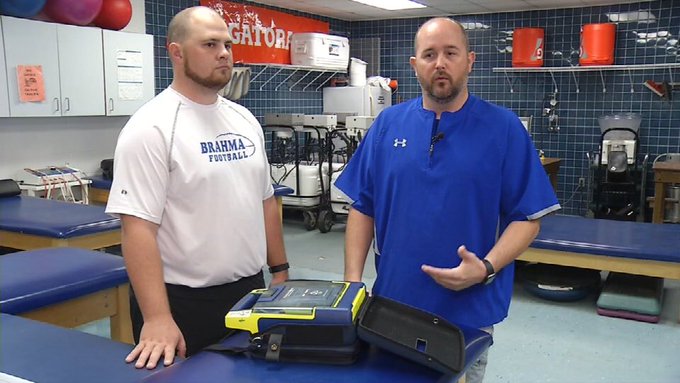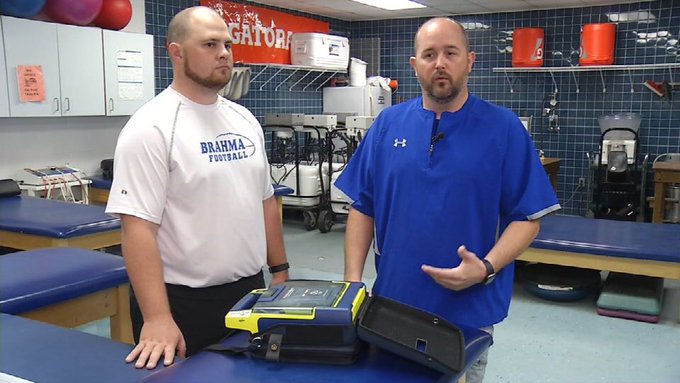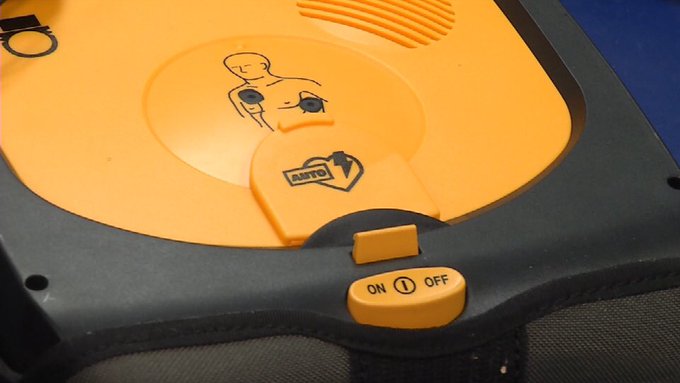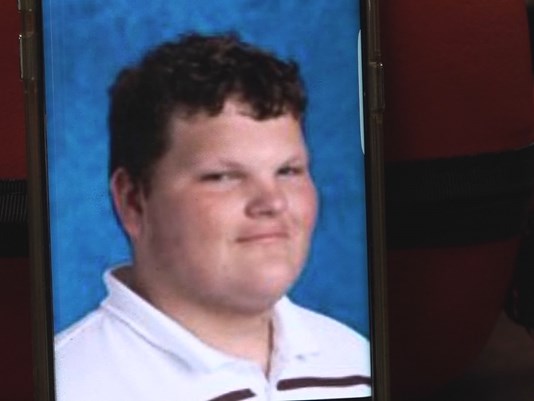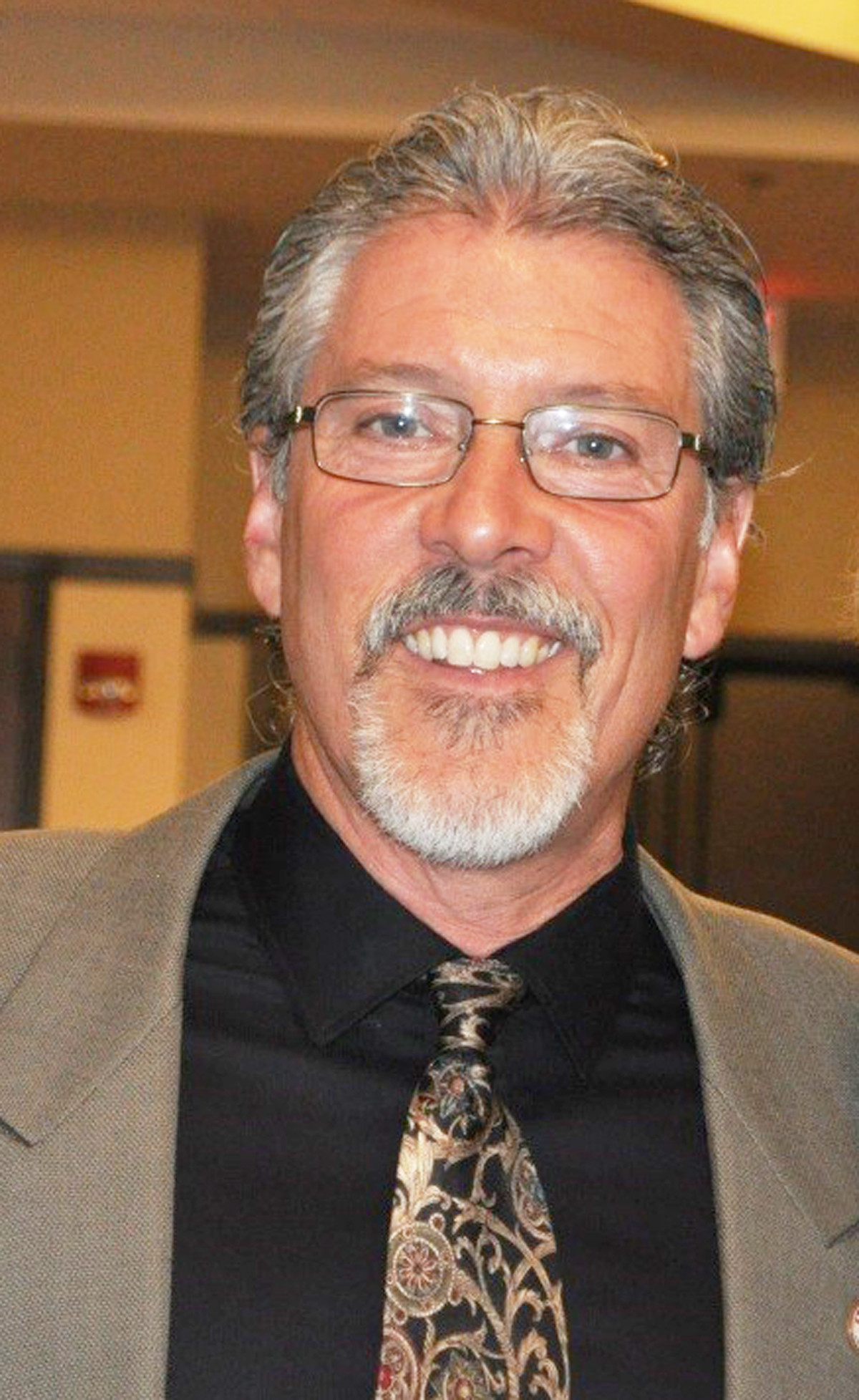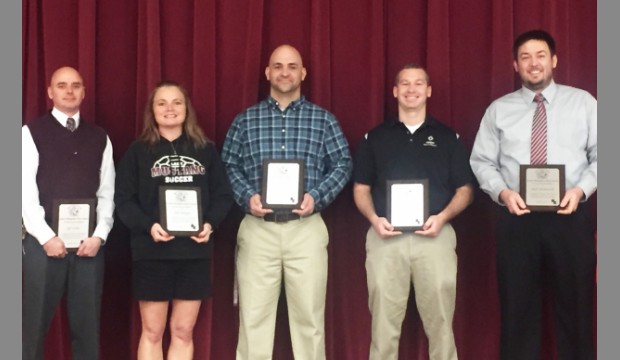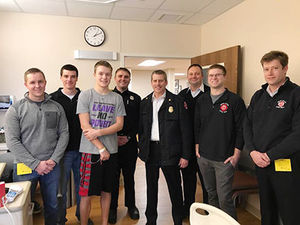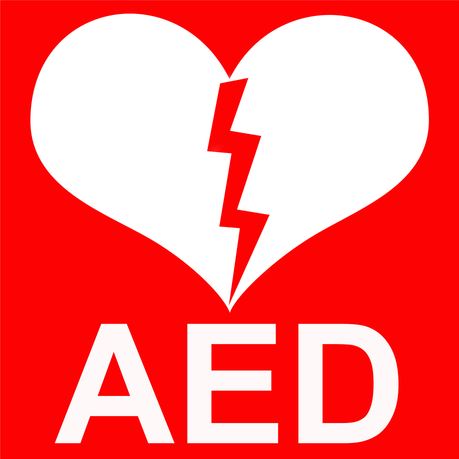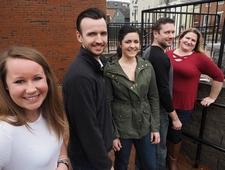
Article reposted from Edge Radio
Author: Ryan O’Leary
Robin Hunt understands the praise and attention she’s received the past two weeks. She just doesn’t want people calling her a hero.
Hunt will be the first to tell you: She was simply doing her job on Monday, Feb. 20, when a junior varsity basketball game that seemed like countless other junior varsity basketball games suddenly went terribly, terribly wrong.
Rhys Daigle, a 14-year-old freshman from Nute High School, was spotted by one of the referees in the third quarter and the game at Epping was stopped. Daigle seemed to be wobbly and looked pale, so the officials removed him from the game and the boy took a seat on the bench. Hunt, Epping’s personal athletic trainer through Access Sports Medicine, hurried over to check on him.
“I sat with him on the bench and he was just super pale, super dizzy,” said Hunt, a Hampton native who graduated from Winnacunnet High School in 2010, “and then he just fainted. He just passed out right on me.”
Hunt brought Daigle down to the ground, as two men — one an off-duty EMT, the other off-duty Epping police officer A.J. Towle — rushed over from the stands to assist. But they lost the boy’s pulse as he laid there on the basketball court, and it was Hunt who quickly retrieved the school’s automated external defibrillator (AED) and placed it on the boy’s chest.
“You just hope that it sticks on (his chest) and turn it on,” Hunt said of that moment, “and you hope that it doesn’t have to shock. But when it says ‘shock’ — that’s real.
“‘This machine right here is actually going to save this kid’s life, hopefully,'” she remembers thinking. “You don’t ever think you’re going to see that. It’s scary.”
The AED shocked Daigle twice before a pulse returned. He was breathing on his own again when help arrived to transport him first to Exeter Hospital, and then to Boston by helicopter.
It was learned later that Daigle had an unknown heart condition. Ironically, Hunt did her entire graduate thesis on unknown heart conditions and sudden death in high school athletes.
“That was my last two years of research,” she said of her studies down in Tennessee, “and then here I am, doing it right there.
Hunt was there.
That might be the real miracle in this story, that a school as small as Epping not only had an AED stationed in its gymnasium, but that it has its own athletic trainer who knew where to find it and how to use it when crisis struck.
Personal athletic trainers are not the norm for the smaller New Hampshire schools. Out of the state’s 88 schools in the New Hampshire Athletic Association, 29 do not have an athletic trainer listed in the NHIAA Handbook.
Most will use the per diem approach, bringing in trainers on a game-by-game basis. Some don’t use trainers at all, relying instead on EMTs or coaches, who are required by the NHIAA to be trained in both CPR and First Aid.
“The per diem thing, I would say it’s in the category of being better than nothing,” said Mike Feld, who works out of Marsh Brook Rehab in Somersworth and has been Oyster River’s athletic trainer for 14 years. “There’s also something to be said about having a relationship with the athletes, the coaches, the parents. Having them trust in your knowledge and your skills, trust in your recommendations … as opposed to some random person that shows up twice a week on game days that you really don’t have that relationship with.
Feld continues: “A concussion, a head injury, how the athlete is acting, their personality, is a big part of kind of seeing what’s wrong. If I have no idea how they are normally, I have nothing to compare that to.”
Generally, it comes down to budget, and the high cost of AEDs (which can run into the thousands) is another important part of the story. The state has evolved enough over the past couple years that almost all schools have at least one AED on site. But where? How accessible is it? And in a situation like Epping’s, will there always be somebody there, trained and ready to take immediate action?
“The smaller schools where it’s really not that important yet, who knows?” said Mikaela Harding, who’s in her third year as Winnacunnet’s athletic trainer. “They might not have an AED, and it would take a death or something really bad to happen for them to institute that rule of having one.
“When have we ever seen something like that happening in the New England area? You haven’t. So I think everyone always thinks, like anything in life, ‘It’s never going to happen to me, never going to happen at my school.’ So it’s really eye-opening to know that it could happen anywhere and we always need to be prepared for it.”
Each March, the NATA celebrates National Athletic Training Month, which is a movement that helps spread awareness on the important work that athletic trainers are doing, from the schools to the colleges and pros. Their 2017 slogan is “Your Protection Is Our Priority.”
“I think it’s important,” Access Sports Medicine and Exeter AT Heidi Kirby said. “I’ve been at Exeter 15 years and there’s still people who don’t know what I do. These parents come in and they’re like ‘Well, who are you?'”
It’s part of the struggle that athletic trainers face on a daily basis. It’s a job that taxes the social life, requiring long hours, nights and weekends. More often than not, the job’s a whole lot less exciting than what Hunt encountered on Feb. 20.
“The goal is to do nothing,” Portsmouth High School AT Ryan Dolan put it, “but be ready for anything.”
The crux of the job, aside from counselling, stretching and rehab, is recognizing when an athlete is seriously hurt or in trouble, and when an athlete can safely be treated and put back into a game.
“I’d like people to know that we’re here to care for their children,” Kirby said. “We’re here on the sidelines. We give care that’s equal to what they’re going to get at the college level, sometimes the pro levels.
“We’re there to help. We’re not there to hurt, and if I can keep a kid playing I’m going to keep a kid playing — safely.”
But as we’ve seen here and throughout the country, particularly when the fall high school teams return to the field under the blazing summer sun, things can turn from safe to serious in a heartbeat.
“It’s interesting because you start to think of it as just your daily job, you show up, you do what you do, wrap up a couple kids, and that’s it,” said Taylor Brown, an Exeter grad who’s now the AT at Sanborn Regional. “But the potential for something more is always there. Things like this are kind of a reminder of that.”
nnn
With the schools on vacation this week, Hunt had some time Tuesday to visit Boston Children’s Hospital, where she officially met Daigle for the first time.
“He’s doing well,” Hunt said. “He was sleeping. His dad woke him up.
“He just said ‘Thanks for saving my life.’ And then he went back to sleep. But I’ll take it. That’s all I need.”
Most of the athletic trainers we see at games throughout the Seacoast have never encountered a situation so dire. But they can all find comfort in the fact that they’re trained professionals, that in the case of an emergency, like if a 14-year-old boy is laid down on the basketball court and his heart stops, that there’s a process in place that can save a life.
Hunt was there. Next time, it could be any one of her peers.
“Something like this happens and you kind of think, Do I know?” Dolan said. “What would I do? How would I handle it? And do I have everything with me that I would need to handle a situation with a young kid? It’s good it happened the way it did with (Hunt), but it’s good for everybody else locally to kind of remember and go through their training one more time, in hopes that it happens that way again.”
“It’s great that she was there,” Kirby added of Hunt. “It’s such a small school. It’s just another example as to why, even if you’re a small school, to find it in your budget to at least have a per diem, if not a part-timer, because it could happen at any contest and it could be anything.”
